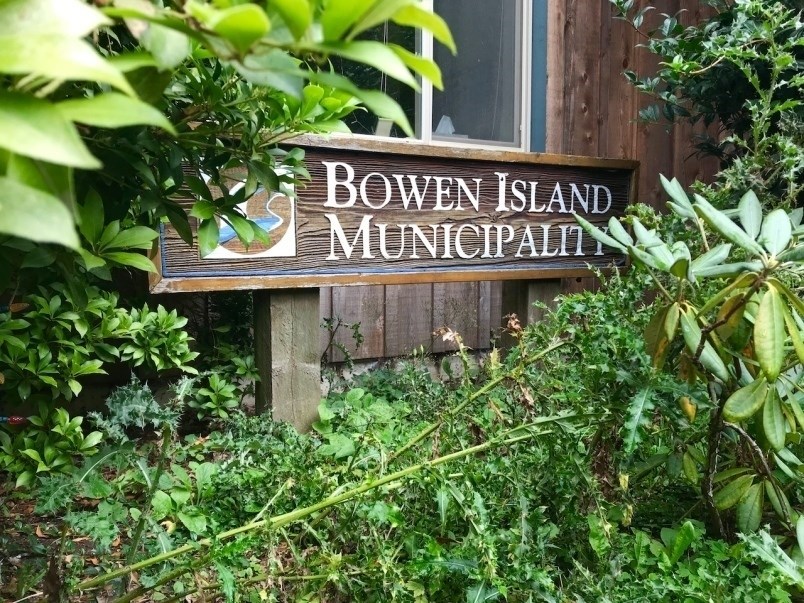Bowen Island Municipality’s Housing Advisory Committee has recently started inviting local developers for informal discussions about building housing on Bowen Island.
Their first guest was Rob Purdy, one of the faces behind the D.K. Harris Properties LTD rental housing development across from the museum, which is nearing completion. He spoke to the committee on Sept. 9.
Purdy describes himself as a finance person, and he’s no stranger to the housing game – he works in housing in Vancouver and has his own company that finances non-market and rental housing in B.C. and beyond.
The housing project on Bowen, building a project as the owner, is Purdy’s first and maybe only such endeavour, he said. “It came out of a need in our community and the need for rental housing,” he said, “and I was aware of funding that was available to do it.”
The development has seen significantly more interest than they have units, said Purdy and close to 100 per cent of their list is what they’d call locals.
The committee provided Purdy a host of questions that prompted a train of thought discussion.
What are your thoughts on housing on Bowen?
Bowen needs more housing diversity, said Purdy, and it’s an issue everywhere. It’s no secret Bowen has lots of single family homes, but lacks in diversity for economic circumstances as well as life stages (from young singles or couples, to young families, to maturing families, to downsizing). “We don’t have much housing that allows for the transition between those different phases and different living circumstances.”
The fastest way to get diversity is to use what already exists on-island, said Purdy. That is taking advantage of the secondary buildings, little cabins, and other liveable units that aren’t necessarily permitted under current regulations. “There’s creative uses for what’s already built,” he said. “Just open that up to existing property owners to allow different uses.”
Opening up those units can also help with affordability for homebuyers, reasoned Purdy, by providing an income stream for property owners. “You can help deal with the crazy home prices …which is something that, at a municipal level, we can’t do a whole lot about. It’s a market thing – and it’s a government thing, but at different levels.”
Later in the meeting, Purdy noted that no matter what you’re building, it’s expensive to build on Bowen – for the rental project, he said construction costs are at least 25 to 30 per cent over what they are in the city. Material and labour are expensive
What’s hindering these properties joining the market?
The requirement that properties with secondary detached dwellings be at least 0.9 of an acre in size Purdy said “feels somewhat arbitrary.” “There’s a lot of properties between half an acre and an acre that that could easily fit a coach house or a smaller dwelling.”
Then there’s water and sewage outside of the municipal water systems, Purdy also pointed to as a problem. “Under the drinking water protection act, as soon as you make a second connection on your well, you’re now water system,” he said. “I think that scares a lot of people away.
Purdy said he’s gone through that and it was about $50,000. “It’s a bit of a gotcha in the process that will probably be difficult for those homeowners to navigate.”
When it comes to sewage, many homes were built with a sceptic field designed for one house, which could be a snag if adding a secondary dwelling.
Though the water and sewage issues are provincially regulated, they’re considerations to keep in mind, said Purdy, and it would be helpful if that threshold were higher.
Given the island’s limited resources, it’s important to build what’s needed on Bowen, said Purdy. “I do believe that there’s basically unlimited demand for housing over here, whatever you build will just continue to get filled,” he said. He doesn’t think building more and more will help – Bowen’ is far too small to influence the housing market or rental prices. “We could just fill up the island with more people and stretch resources without actually meeting a need that we have in the community.”
The process for building the rental housing building was really good, said Purdy. “More of that, for others, would be great.”
Having the land pre-zoned for housing offered time and certainty, said Purdy. The government financing (not a grant) needed certainty that the developers would be allowed to build what they wanted to build on that lot. There were also no carrying costs – “we bought the site on a Friday, and we started building on Monday.”
See the entire meeting on BIM’s YouTube channel.
On Oct. 8, Mark Shieh, of Tomo Real Estate spoke to the HAC. It is available on YouTube and the Undercurrent will include coverage when space allows.
Editor’s note: I’m sorry this story is so belated. Sometimes I’m crunched for space and time. I am catching up on stories ahead of my departure. Thank you for reading!



